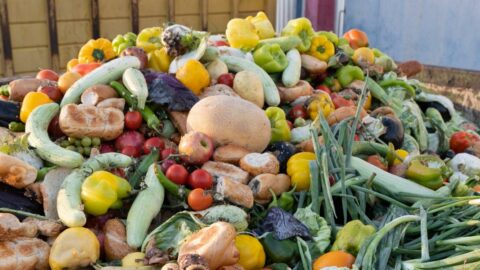 In the intricate tapestry of environmental challenges facing our world today, food and water security emerge as pivotal concerns, intricately woven with a multitude of environmental factors. These issues are not standalone crises but are deeply interconnected with various environmental phenomena.
In the intricate tapestry of environmental challenges facing our world today, food and water security emerge as pivotal concerns, intricately woven with a multitude of environmental factors. These issues are not standalone crises but are deeply interconnected with various environmental phenomena.
Ocean acidification, a silent yet profound change in our seas, impacts marine life and, by extension, the global fish supply, a crucial component of food security. Parallel to this is the crisis of over-fishing, which depletes marine biodiversity and threatens the delicate balance of marine ecosystems. On land, water scarcity, a growing global dilemma, directly influences agricultural productivity and thus, food availability. This is further compounded by the lack of clean water, a basic yet often inaccessible necessity, affecting both health and food production.
Climate change, an overarching environmental challenge, exerts significant influence on food production through altered weather patterns and extreme conditions, impacting crop yields and food distribution networks. Closely linked is the issue of soil degradation, a less visible yet critical factor undermining our ability to cultivate food sustainably.
Each of these elements – ocean acidification, over-fishing, water scarcity, lack of clean water, climate change impacts on food production, and soil degradation – plays a crucial role in the broader narrative of food and water security. They are not just environmental concerns; they are fundamental to our survival and well-being, necessitating a holistic understanding and concerted action.
We will now delve into each of these elements, exploring the specific issues and challenges they present, and highlighting the innovative solutions and key players dedicated to addressing and resolving these critical environmental concerns.
1. Climate Change and Food Production
The Climate Challenge: A Global Weather Shift
Climate change stands at the forefront of environmental issues impacting food production, with its effects permeating every corner of our planet. It’s not just a matter of warmer temperatures; climate change brings with it a shift in global weather patterns, affecting rainfall, temperature extremes, and the frequency of severe weather events. These changes create a ripple effect, profoundly influencing agricultural practices, crop viability, and ultimately, food security.
The consequences of these shifts are both diverse and profound. For instance, increased temperatures can accelerate crop maturation, reducing growing periods and potentially diminishing yields. In some regions, particularly those already facing water scarcity, higher temperatures exacerbate drought conditions, further stressing water resources. Conversely, in other areas, increased precipitation leads to flooding, which can devastate crops and erode valuable topsoil.
The Yield Paradox: Balancing Quantity and Quality
The impact of climate change on crop yields is a complex interplay of various factors. While some areas may experience a temporary boost in agricultural productivity due to longer growing seasons and increased CO2 fertilization, these benefits are often offset by the negatives. Extreme weather events, such as heatwaves, droughts, and floods, can decimate crops, leading to significant yield losses. Additionally, changes in temperature and humidity can encourage the proliferation of pests and diseases, further threatening crops.
Quality, too, suffers under the strain of climate stress. For example, elevated CO2 levels can lower the nutritional value of certain staple crops, reducing their protein, zinc, and iron levels. This not only impacts food quantity but also the overall nutritional quality, posing a hidden threat to global health, particularly in regions already burdened by malnutrition.
Innovating for a Sustainable Future
Addressing the challenges posed by climate change to food production requires innovative thinking and adaptive strategies. One such approach is the development of climate-resilient crops. These are varieties bred to tolerate extreme weather conditions, such as drought or flooding. Organizations like the Consultative Group on International Agricultural Research (CGIAR) are at the forefront of this research, developing crops that can withstand the changing climate.
Another key strategy is the adoption of sustainable farming practices. These include techniques like precision agriculture, which utilizes technology to optimize field-level management regarding crop farming. This approach helps in efficient water usage, minimizes the need for chemical inputs, and improves crop yields.
Agroforestry, the integration of trees into farming landscapes, is another sustainable practice gaining traction. Trees can provide shade, reduce soil erosion, and improve soil quality, creating a more resilient agricultural ecosystem. Projects like the World Agroforestry Centre are pioneering research in this area, demonstrating the viability and benefits of these methods.
Moreover, there is an increasing focus on utilizing technology to predict and mitigate the impacts of climate change. Startups and tech companies are developing tools that harness the power of big data, AI, and machine learning to provide farmers with actionable insights. These innovations range from weather prediction models to soil health monitoring systems, enabling farmers to make informed decisions and adapt to the rapidly changing climate.
In conclusion, the relationship between climate change and food production is intricate and challenging. It requires a concerted effort from governments, non-profits, businesses, and the agricultural community to mitigate its impacts. By embracing innovative technologies and sustainable practices, there is a path forward to ensure food security in the face of a changing climate. This journey, though fraught with challenges, also presents opportunities for growth, resilience, and a sustainable future for global food systems.
2. Soil Degradation: The Underlying Crisis
 Unseen but Vital: Understanding Soil Degradation
Unseen but Vital: Understanding Soil Degradation
Soil degradation, a critical yet often overlooked environmental issue, is silently undermining our ability to sustainably produce food. The health of soil is fundamental to agriculture, yet its degradation is occurring at an alarming rate due to various factors, including intensive farming practices, deforestation, and the use of pesticides and herbicides.
Soil degradation involves the loss of the physical, chemical, and biological quality of soil. This process diminishes the land’s productivity, affecting crop yields and, by extension, food security. Factors like erosion, nutrient depletion, salinization, and contamination play a major role in this degradation.
Pesticides and herbicides, though used for controlling pests and weeds, can have unintended consequences on soil health. Their overuse can lead to a decrease in soil biodiversity, disrupting crucial microbial activities that maintain soil structure and fertility. Additionally, these chemicals can contaminate soil and water sources, posing a threat to both environmental and human health.
The Ripple Effect: From Soil to Table
The effects of soil degradation extend far beyond the field. Diminished soil quality leads to reduced crop yields and can also lower the nutritional value of the food produced. This not only impacts food quantity but also its quality, with potential consequences for public health, especially in regions already facing nutritional challenges.
Moreover, unhealthy soil contributes to broader environmental issues. Degraded soil has a reduced ability to store carbon, which can exacerbate climate change. It also affects the soil’s water retention capability, increasing the risk of floods and contributing to water scarcity.
Sowing the Seeds of Change: Soil Conservation and Rehabilitation
Addressing soil degradation requires a shift towards more sustainable soil management practices. Conservation agriculture is one approach gaining traction worldwide. This method includes minimal soil disturbance, maintaining a permanent soil cover, and practicing crop rotation, which helps in preserving soil structure, preventing erosion, and maintaining nutrients.
Organic farming is another key strategy. By avoiding synthetic pesticides and fertilizers, organic farming enhances soil biodiversity and reduces contamination. The use of natural compost and green manure also enriches soil fertility.
Moreover, innovative techniques like biochar application – adding charcoal to improve soil fertility – and mycorrhizal inoculation – using beneficial fungi to enhance plant nutrient uptake – are showing promising results in soil rehabilitation.
Organizations such as the Food and Agriculture Organization (FAO) and the World Food Programme are actively promoting sustainable soil management practices. Additionally, numerous startups and non-profits are pioneering soil health initiatives. For example, companies like The Soil Health Institute are conducting cutting-edge research and advocating for policies that support soil health.
In conclusion, soil degradation poses a significant threat to global food security and environmental sustainability. However, through the adoption of sustainable practices and innovative technologies, we can reverse this trend. By nurturing the soil, we not only secure our present food needs but also ensure a fertile legacy for future generations. The path to a sustainable future lies beneath our feet – in the health and vitality of the soil that sustains us.
3. Water Scarcity: A Growing Global Concern
 The Thirsty Planet: Defining Water Scarcity
The Thirsty Planet: Defining Water Scarcity
Water scarcity, an issue of critical importance in today’s world, is more than just a lack of water. It’s a complex phenomenon involving both physical scarcity, where natural water resources are limited, and economic scarcity, where water is available but not accessible due to lack of infrastructure or resources. This scarcity is driven by a combination of factors, including climate change, population growth, and increased demand for water-intensive goods and services.
The implications of water scarcity are profound, touching every aspect of society, but its most immediate and stark impact is on agriculture, the largest consumer of freshwater resources. As water becomes scarcer, the ability to sustain agricultural practices, and thus ensure food security, comes under threat.
Dry Lands, Drying Rivers: The Geographical Impact
The geographic spread of water scarcity is both vast and varied. Arid regions like parts of Africa, the Middle East, and Australia naturally face physical water scarcity. However, other regions are increasingly experiencing scarcity due to over-extraction of water resources for agriculture, industry, and domestic use.
Areas such as California in the United States, the Indus Basin in Pakistan, and the Murray-Darling Basin in Australia are notable examples where extensive agriculture has led to significant water stress. Climate change further exacerbates this problem by altering rainfall patterns and increasing the frequency of droughts, making water scarcity a growing concern in areas previously considered water-secure.
Parched Fields: The Impact on Agriculture and Food Production
The relationship between water scarcity and agriculture is a delicate balance. On the one hand, agriculture is a major contributor to water scarcity due to inefficient irrigation practices and over-extraction of water. On the other hand, it is also a victim of reduced water availability.
Water scarcity leads to reduced agricultural yields due to the limited availability of water for irrigation. In regions where rain-fed agriculture is predominant, irregular and reduced rainfall can lead to crop failures, exacerbating food insecurity. Furthermore, water scarcity can lead to increased competition for water between different sectors, with agriculture often being the loser in this competition, given the higher economic returns of industrial and urban uses.
Quenching the Thirst: Solutions and Innovations
Addressing water scarcity requires a multifaceted approach. One key strategy is improving irrigation efficiency. Techniques like drip irrigation and sprinkler systems can significantly reduce water usage while maintaining crop yields. Organizations like the International Water Management Institute are working on developing and promoting such efficient irrigation methods.
Another approach is the use of drought-resistant crop varieties, which can survive in water-scarce conditions. Advances in genetic engineering and traditional breeding techniques have led to the development of these resilient crops, offering a glimmer of hope for maintaining agricultural productivity in arid regions.
Water reuse and recycling is another area receiving increasing attention. Techniques to treat and reuse greywater (wastewater generated from domestic activities) for agricultural purposes are being developed, reducing the strain on freshwater resources.
Moreover, policy and governance play a crucial role in managing water resources. Initiatives for integrated water resource management, which involve the coordinated development and management of water, land, and related resources, are crucial. Policies that incentivize efficient water use, regulate extraction, and promote equitable distribution are essential components of a sustainable approach to water management.
In conclusion, water scarcity is a challenge of global proportions, with direct implications for food security and sustainable development. Tackling this issue requires a combination of technological innovation, sustainable practices, and effective policy and governance. By addressing water scarcity, we not only secure our water needs but also take a significant step towards a more sustainable and food-secure future.
4. The Challenge of Clean Water Accessibility in the U.S. and Beyond
A Closer Look: The U.S. Water Crisis
While often perceived as a problem of developing nations, access to clean water is also a significant issue within the United States. Factors like aging infrastructure, industrial pollution, and natural contaminants pose challenges to water quality and accessibility across the country. Flint, Michigan’s water crisis, where lead contamination posed severe health risks, is a stark reminder of these challenges. Similar situations, albeit less publicized, exist in many other parts of the country, affecting millions of Americans.
Rural areas and small communities often face the brunt of these challenges, lacking the resources and infrastructure to effectively treat and manage water. Additionally, agricultural runoff, a significant issue in the U.S., contributes to water pollution, affecting both drinking water and ecosystems.
The Global Perspective: Widespread Water Challenges
Globally, the situation is even more dire. The World Health Organization reports that over two billion people lack access to safely managed drinking water services. Developing countries, in particular, struggle with inadequate water infrastructure, pollution, and the impacts of climate change, exacerbating water scarcity and contamination issues.
In both the U.S. and globally, water quality issues not only affect human health but also agriculture and ecosystems. Contaminated water used for irrigation can introduce toxins into the food chain, while polluted water bodies can lead to biodiversity loss and ecosystem degradation.
Health Implications: From the U.S. to the World
In the United States, water quality issues can lead to a range of health problems, from gastrointestinal illnesses to long-term exposure risks like lead poisoning. The situation is even more critical in developing countries, where waterborne diseases such as cholera and typhoid fever are common due to contaminated water supplies.
Children, particularly in poorer communities and developing countries, are most vulnerable to the effects of polluted water. Lack of clean water not only leads to health issues but also impacts education and economic opportunities, perpetuating poverty cycles.
Addressing the Water Quality Challenge
In the U.S., addressing water quality issues involves upgrading aging water infrastructure, enforcing stringent regulations on industrial and agricultural pollutants, and investing in community-level water treatment solutions. Initiatives like the Environmental Protection Agency’s Clean Water State Revolving Fund provide crucial funding for water infrastructure projects.
Globally, the solutions include improving water infrastructure, promoting sustainable water management practices, and increasing investment in water and sanitation services. Organizations like Water.org are pivotal in this effort, providing innovative solutions like microfinancing for water and sanitation infrastructure in underserved communities.
Technological innovations play a crucial role in both the U.S. and globally. Advanced water purification systems, efficient wastewater treatment methods, and low-cost filtration technologies are essential in ensuring safe water access.
In conclusion, while the context and severity of clean water access issues vary between the U.S. and the rest of the world, the underlying challenge remains universal. Ensuring access to clean water is imperative for health, environmental sustainability, and socioeconomic development. Addressing this challenge requires a combination of robust policy measures, technological innovation, and international cooperation, paving the way for a future where clean water is a reality for all.
5. Ocean Acidification and Its Impact on Food Security
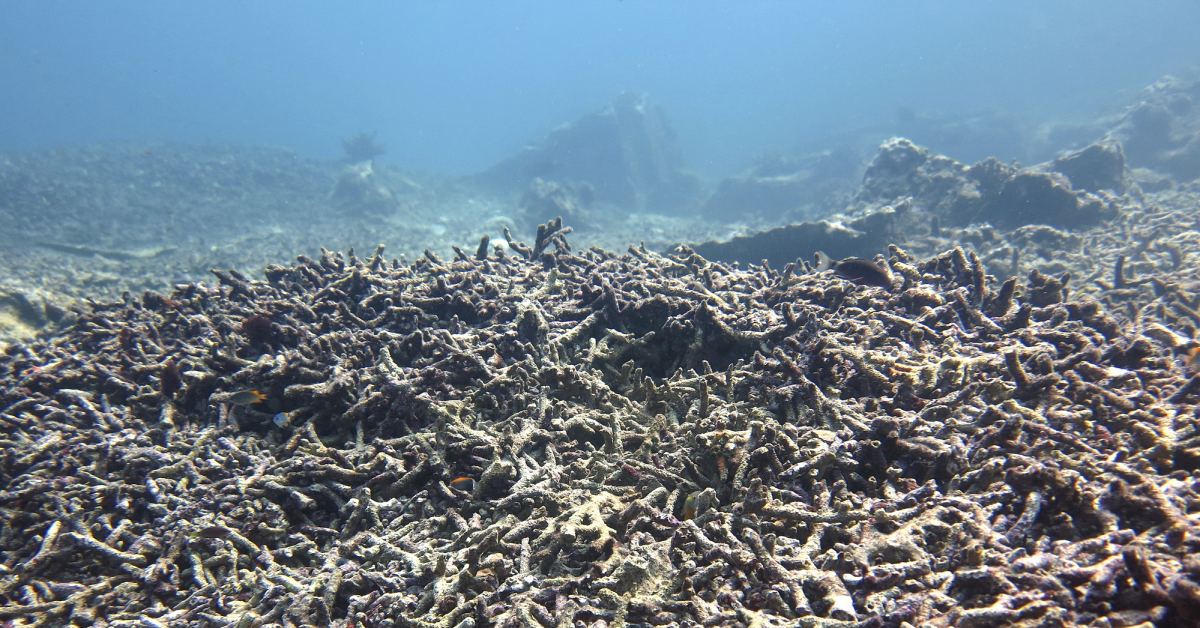
Dead coral reef.
A Silent Shift: The Reality of Ocean Acidification
Ocean acidification, a less visible but equally critical environmental issue, is transforming the chemistry of our oceans with far-reaching consequences. This process, often termed the ‘other CO2 problem,’ occurs when the oceans absorb carbon dioxide (CO2) from the atmosphere. The absorbed CO2 reacts with seawater, forming carbonic acid and lowering the ocean’s pH levels. Since the Industrial Revolution, oceanic pH has dropped by 0.1 units, representing a 30% increase in acidity, a rate of change unprecedented in the last 300 million years.
This shift in ocean chemistry primarily affects calcifying organisms like corals, mollusks, and certain plankton species, which rely on carbonate ions in seawater to form their shells and skeletons. The reduced availability of these ions hampers their ability to build and maintain these structures, threatening their survival.
Disrupted Ecosystems: The Marine Life Crisis
The impacts of ocean acidification on marine ecosystems are profound and multifaceted. Coral reefs, often described as the rainforests of the sea, are particularly vulnerable. These biodiversity hotspots support up to a quarter of all marine species. As acidification weakens coral structures, it compromises the habitat and breeding grounds of countless marine organisms, leading to a decline in fish populations and biodiversity.
Additionally, acidification affects the behavior and physiological processes of some fish species. Studies have shown altered predator-prey dynamics, impaired sense of smell, and changes in fish behavior and development in more acidic conditions. These changes can ripple through the marine food web, altering ecosystem dynamics and impacting species at all trophic levels.
The Human Angle: Threats to Global Fish Supply and Seafood Industries
The consequences of ocean acidification extend beyond environmental degradation, directly impacting food security and the global economy. Millions of people worldwide rely on fish and seafood as a primary protein source, and the fishing industry is a critical economic sector in many countries.
As fish populations and marine biodiversity suffer due to acidification, the implications for the global fish supply are significant. Declines in fish stocks can lead to reduced catches, affecting food availability, especially in regions heavily dependent on seafood. The economic impact is also notable, with the seafood industry facing potential revenue losses, threatening the livelihoods of millions who depend on fishing and related sectors.
The impacts are not just felt in open oceans but also in coastal communities where shellfish farming is a vital industry. Shellfish are particularly sensitive to acidification, and their decline can devastate local economies and food systems.
Navigating Troubled Waters: Mitigation and Adaptation Strategies
Addressing ocean acidification requires a dual approach of mitigation and adaptation. Reducing CO2 emissions is the primary mitigation strategy, necessitating global cooperation and commitment to sustainable energy practices. The Paris Agreement under the United Nations Framework Convention on Climate Change represents a significant step in this direction.
In terms of adaptation, efforts are underway to develop acidification-resilient marine species through selective breeding programs. Additionally, research into buffering systems to counteract acidity in localized areas, such as shellfish farms, offers some hope for mitigation at the ecosystem level.
Organizations like The Ocean Foundation are actively working to combat ocean acidification through research, restoration projects, and advocacy. They, along with other nonprofits and research institutions, play a crucial role in advancing our understanding of acidification and developing effective responses.
In conclusion, ocean acidification is an insidious threat to marine ecosystems, global food security, and economic stability. The challenge it poses is immense, but through concerted global efforts in CO2 reduction, research, and innovative adaptation strategies, there is potential to mitigate its impacts. The health of our oceans is inextricably linked to our well-being, underscoring the need for immediate and sustained action in addressing this critical issue.
6. The Over-Fishing Crisis
 Emptying the Seas: A Global Trend of Over-Exploitation
Emptying the Seas: A Global Trend of Over-Exploitation
Following the critical issue of ocean acidification, another significant threat to marine ecosystems and food security is over-fishing. This phenomenon, characterized by fishing at a rate that exceeds the natural replenishment of fish stocks, is a global concern with far-reaching consequences. The United Nations Food and Agriculture Organization reports that over 30% of the world’s fish stocks are currently overfished, a trend that shows no sign of abating due to increasing demand for seafood, advancements in fishing technology, and often inadequate regulatory frameworks.
Over-fishing is not confined to a particular region; it’s a widespread problem affecting oceans around the world. From the once-abundant cod fisheries of the North Atlantic to the declining tuna populations in the Pacific, over-fishing has become a pervasive issue, decimating fish populations and altering marine ecosystems.
The Ripple Effect: Biodiversity Loss and Ecosystem Imbalance
The environmental impacts of over-fishing are profound. As key species are depleted, the balance of marine ecosystems is disrupted, leading to a cascade of effects across the food web. This imbalance can lead to the overgrowth of algae, changes in habitat, and a decline in species that depend on the overfished populations for food.
Furthermore, certain fishing practices, such as bottom trawling, cause additional environmental damage. These methods not only capture the targeted species but also result in bycatch – the unintentional capture of non-target species, including juvenile fish, marine mammals, birds, and turtles. This indiscriminate form of fishing can lead to significant biodiversity loss and habitat destruction.
A Threat to Food Security and Economic Stability
The implications of over-fishing extend beyond environmental concerns, directly impacting global food security and the livelihoods of millions. Fish is a crucial source of protein and nutrients for billions of people worldwide, particularly in developing countries. The depletion of fish stocks threatens this vital food source, potentially leading to increased food prices and reduced dietary diversity.
The economic impact of over-fishing is also significant. Many coastal communities rely heavily on fishing for their livelihoods. As fish stocks dwindle, these communities face economic hardships, with fewer opportunities for employment and increased competition for remaining fish resources.
Charting a Sustainable Course: Towards Responsible Fishing Practices
Addressing the over-fishing crisis requires a comprehensive and coordinated approach. Key strategies include implementing and enforcing sustainable fishing quotas, based on scientific assessments of fish stock health. This involves international cooperation, given the migratory nature of many fish species.
Marine protected areas (MPAs) are another effective tool in combating over-fishing. By designating specific ocean regions as no-fishing zones, MPAs allow ecosystems to recover and replenish, benefiting both the environment and the fishing industry in the long term.
Innovative solutions are also emerging in the form of sustainable aquaculture practices. Developing efficient and environmentally friendly aquaculture can help meet the growing demand for seafood without putting additional pressure on wild fish populations.
Organizations like the Marine Stewardship Council and the Aquaculture Stewardship Council play pivotal roles in promoting sustainable fishing practices. They provide certification programs that help consumers identify and choose sustainably sourced seafood, encouraging responsible fishing and aquaculture practices.
In conclusion, the over-fishing crisis is a complex issue with significant implications for marine biodiversity, food security, and economic stability. Addressing it requires a multi-faceted approach that balances the needs of the environment, the fishing industry, and communities dependent on marine resources. Through sustainable management practices, international cooperation, and consumer awareness, we can work towards a future where marine ecosystems are healthy and the benefits they provide are enjoyed sustainably for generations to come.
7. Additional Environmental Factors Affecting Food and Water Security
 Beyond the Obvious: Pervasive Environmental Influences
Beyond the Obvious: Pervasive Environmental Influences
While issues like climate change, over-fishing, and soil degradation take center stage in discussions about food and water security, several other environmental factors also play a crucial role. These include the widespread use of pesticides and fertilizers, deforestation and habitat loss, and emerging challenges such as pollution and invasive species.
The Double-Edged Sword of Pesticides and Fertilizers
The use of pesticides and fertilizers in agriculture has been instrumental in increasing food production to meet the demands of a growing global population. However, their overuse and misuse have significant repercussions for water systems and food safety. Runoff from agricultural fields carries these chemicals into rivers, lakes, and groundwater, leading to the eutrophication of water bodies and contamination of drinking water sources. This not only affects aquatic life but also poses health risks to humans through contaminated water and food products.
Moreover, the persistent use of certain pesticides can lead to the accumulation of toxins in the soil and in food crops, potentially leading to long-term health issues in consumers, including neurological and reproductive disorders, and an increased risk of cancer.
Deforestation and Habitat Loss: Indirect but Critical Impacts
Deforestation and habitat loss, driven by agricultural expansion, urban development, and logging activities, have far-reaching effects on food and water security. Forests play a crucial role in regulating water cycles; their loss can lead to reduced rainfall in an area, exacerbating water scarcity. Additionally, the loss of forests and natural habitats can lead to soil erosion, reducing the land’s agricultural potential and leading to further degradation of water quality.
The loss of biodiversity due to habitat destruction also has indirect impacts on food security. Biodiverse ecosystems are often more resilient and productive, providing a range of services essential for agriculture, including pollination, pest control, and soil fertility.
Emerging Challenges: Pollution, Invasive Species, and Beyond
Emerging environmental challenges also play a significant role in food and water insecurity. Pollution, in its many forms, continues to degrade the quality of both land and water resources. Industrial waste, plastic pollution, and air pollution deposit harmful substances in soil and water, affecting both crop production and the health of aquatic ecosystems.
Invasive species, introduced intentionally or accidentally into new environments, can disrupt local ecosystems, outcompeting native species for resources. In agriculture, invasive pests and weeds can lead to significant crop losses and increased costs for control measures.
Paving the Way Forward: Addressing the Multifaceted Challenges
Addressing these diverse environmental challenges requires a multifaceted and integrated approach. Reducing the reliance on chemical pesticides and fertilizers through sustainable farming practices, such as integrated pest management and organic farming, can mitigate their negative impacts on water systems and food safety.
Efforts to combat deforestation and habitat loss include enforcing strict logging regulations, promoting reforestation initiatives, and supporting sustainable land-use practices that balance environmental conservation with economic development.
Combating emerging challenges like pollution and invasive species calls for robust policy frameworks, international cooperation, and community engagement. Initiatives such as pollution control regulations, waste management strategies, and programs for the control and eradication of invasive species are essential in this regard.
In conclusion, food and water security are influenced by a complex web of environmental factors. While some challenges are direct and apparent, others, like pesticide and fertilizer use, deforestation, and emerging threats like pollution and invasive species, have more indirect but equally significant impacts. Addressing these issues holistically is crucial for ensuring the sustainability of our food and water resources, ultimately contributing to a healthier, more resilient planet.
8. Integrative Solutions and Sustainable Practices
 Embracing Holistic Approaches for Global Challenges
Embracing Holistic Approaches for Global Challenges
In the face of the multifaceted challenges of food and water insecurity, integrative and sustainable solutions are not just beneficial but essential. The interconnected nature of these issues demands approaches that consider the environmental, social, and economic aspects of sustainability. Integrated approaches bring together various stakeholders, including governments, communities, industries, and environmental groups, to develop comprehensive strategies that address the root causes of food and water insecurity while promoting long-term sustainability.
Sustainable Practices: Agriculture, Fishing, and Water Management
Sustainable Agriculture: In the realm of agriculture, sustainable practices include organic farming, conservation agriculture, and agroecological approaches. These methods emphasize the use of natural processes and materials, minimizing the impact on the environment and preserving soil health. Techniques like crop rotation, intercropping, and the use of natural pest control contribute to maintaining biodiversity and reducing the reliance on chemical inputs. Additionally, implementing water-efficient irrigation methods such as drip irrigation helps conserve water resources.
Sustainable Fishing: For the fishing industry, sustainable practices involve managing fish stocks responsibly, avoiding overfishing, and minimizing bycatch. This can be achieved through fishing quotas, size limits, and the use of selective fishing gear. Marine protected areas also play a crucial role in conserving marine biodiversity and allowing overfished areas to recover. Certification programs like those offered by the Marine Stewardship Council help consumers make informed choices, supporting fisheries that adhere to sustainable practices.
Water Management: Sustainable water management is key to addressing water scarcity and quality issues. This includes the implementation of integrated water resource management (IWRM) practices that consider the entire water cycle, from source to sea. Rainwater harvesting, wastewater treatment and reuse, and the protection of wetlands are part of sustainable water management. Policies that promote water conservation, such as water pricing and public awareness campaigns, are also critical.
The Role of Technology and Innovation
Technology and innovation are driving forces in fostering sustainability. Advances in agricultural technology, such as precision farming, use data and analytics to optimize resource use and increase crop yields while minimizing environmental impacts. In fisheries, technology like satellite monitoring and electronic reporting systems enhance the enforcement of fishing regulations and contribute to more sustainable practices.
Water management technologies, including advanced treatment processes for wastewater recycling and desalination, expand the available water sources. Innovations in sensor technology and the Internet of Things (IoT) allow for real-time monitoring of water quality and usage, enabling more efficient water management.
Emerging technologies like blockchain can enhance transparency and traceability in both the agriculture and fishing industries, promoting responsible practices. Similarly, the development of alternative protein sources, such as plant-based and lab-grown meats, has the potential to reduce the environmental footprint of food production.
In conclusion, addressing the challenges of food and water insecurity requires a shift towards integrative solutions and sustainable practices across all sectors. This holistic approach, combined with the power of technology and innovation, offers a path towards a more sustainable and secure future. By embracing these practices, we can ensure that our food and water systems are not only resilient and efficient but also harmonious with the planet’s ecosystems.
Conclusion
Understanding the Tapestry of Interconnected Challenges
Throughout this exploration, the intricate interconnectedness of environmental issues, food, and water security has been evident. From the widespread impacts of climate change and soil degradation to the critical challenges posed by water scarcity, over-fishing, and ocean acidification, each element plays a defining role in shaping our environmental and food landscapes. Additional factors like the use of pesticides and fertilizers, deforestation, and emerging threats such as pollution and invasive species further complexify this web of challenges. The sustainability of our food and water resources is inextricably linked to the health of our environment, making the need for integrative and sustainable solutions more pressing than ever.
A Call to Action: Empowering Individuals and Communities
This understanding beckons a call to action for each of us as individuals and as members of our communities. There are numerous ways we can contribute to positive change:
- Adopt sustainable practices: Simple changes in daily routines, like reducing water waste, choosing sustainable food options, and supporting local agriculture, can have a significant impact.
- Advocate for change: Engaging in community initiatives, supporting policies that promote environmental sustainability, and raising awareness about these critical issues are crucial steps.
- Educational engagement: Continuously educating ourselves and others about these challenges and their solutions can drive collective action and influence policy decisions.
Looking Ahead: The Path Forward
The future outlook, while daunting, is not without hope. Continued advancements in technology and innovation, alongside growing global awareness and commitment to sustainability, provide a foundation for positive change. The increasing adoption of sustainable practices in agriculture, fishing, and water management, coupled with policy reforms and international cooperation, paints a picture of a future where food and water security is achievable.
The importance of continued awareness and education cannot be overstated. As our understanding of these complex environmental issues deepens, so too does our ability to develop more effective and sustainable solutions. The journey toward a more sustainable future is a collective one, requiring the participation and commitment of all sectors of society.
In conclusion, the challenges we face in ensuring food and water security amidst various environmental crises are considerable, but not insurmountable. With concerted efforts, innovative solutions, and a commitment to sustainability, we can forge a path toward a more resilient and sustainable future, ensuring that both our planet and its inhabitants can thrive.
Further Reading
These resources offer a starting point for those seeking to expand their understanding of the multifaceted challenges surrounding food and water security and the environment.
- United Nations Food and Agriculture Organization (FAO): The FAO is a leading source of knowledge and information on agriculture, fisheries, forestry, and sustainability. http://www.fao.org
- World Health Organization (WHO): WHO provides extensive resources on public health, including the impact of environmental factors on food and water safety. http://www.who.int
- Intergovernmental Panel on Climate Change (IPCC): The IPCC offers comprehensive scientific assessments on climate change, its implications, and potential future risks.http://www.ipcc.ch
- Marine Stewardship Council: An organization focused on sustainable fishing, offering certification for sustainably sourced seafood. http://www.msc.org
- World Wildlife Fund (WWF): WWF provides extensive information on environmental conservation, including issues like deforestation and water scarcity. http://www.worldwildlife.org
- The Water Project: An initiative focused on providing safe water and sanitation in sub-Saharan Africa. http://www.thewaterproject.org
- The Soil Health Institute: This institute focuses on the protection and enhancement of soil health and its critical role in agriculture. http://www.soilhealthinstitute.org
- The Ocean Foundation: A foundation dedicated to reversing the trend of destruction of ocean environments around the world. http://www.oceanfdn.org
- Environmental Protection Agency (EPA): The EPA provides resources and information on environmental policies, including water management and pollution control. http://www.epa.gov
- Consultative Group on International Agricultural Research (CGIAR): A global partnership engaged in research for a food-secure future. http://www.cgiar.org
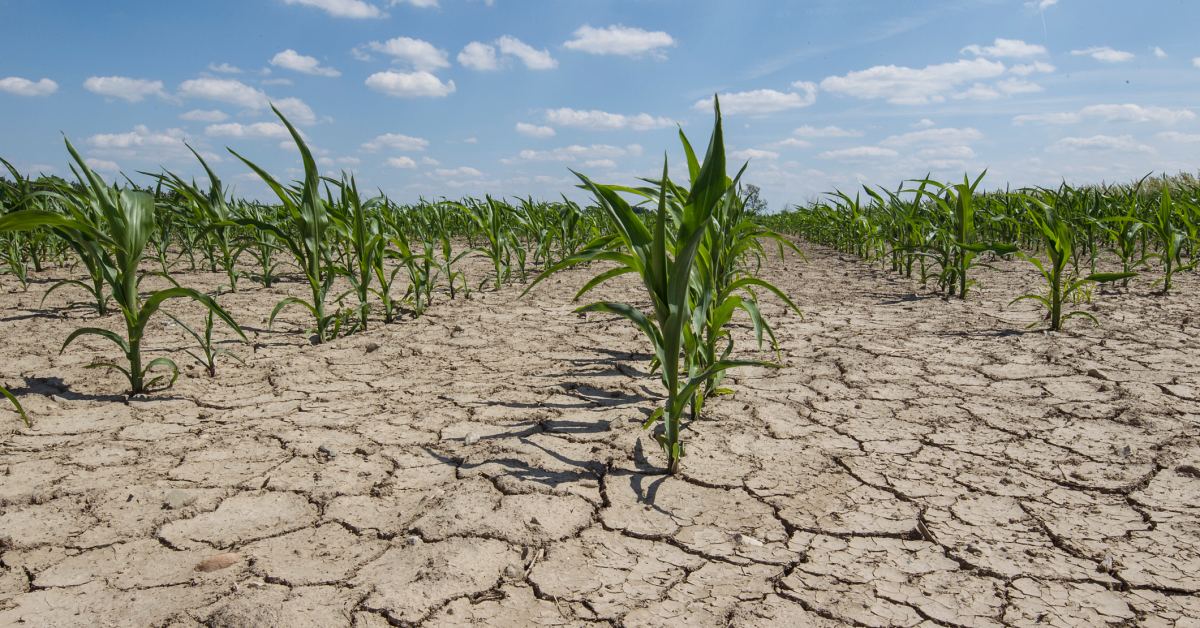
 Unseen but Vital: Understanding Soil Degradation
Unseen but Vital: Understanding Soil Degradation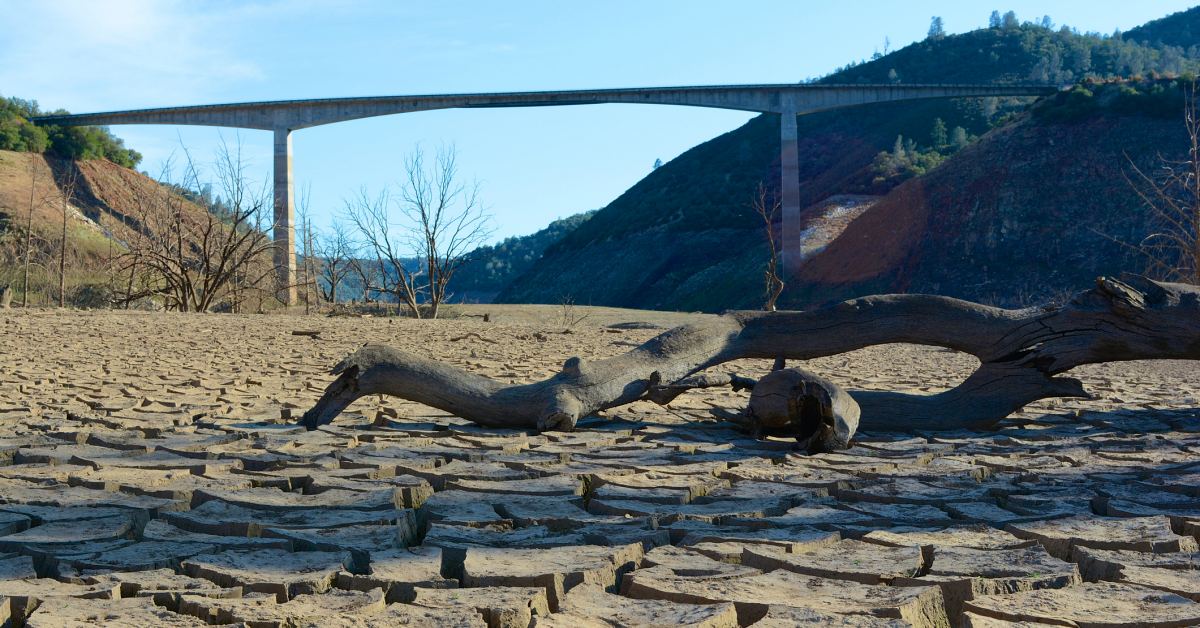 The Thirsty Planet: Defining Water Scarcity
The Thirsty Planet: Defining Water Scarcity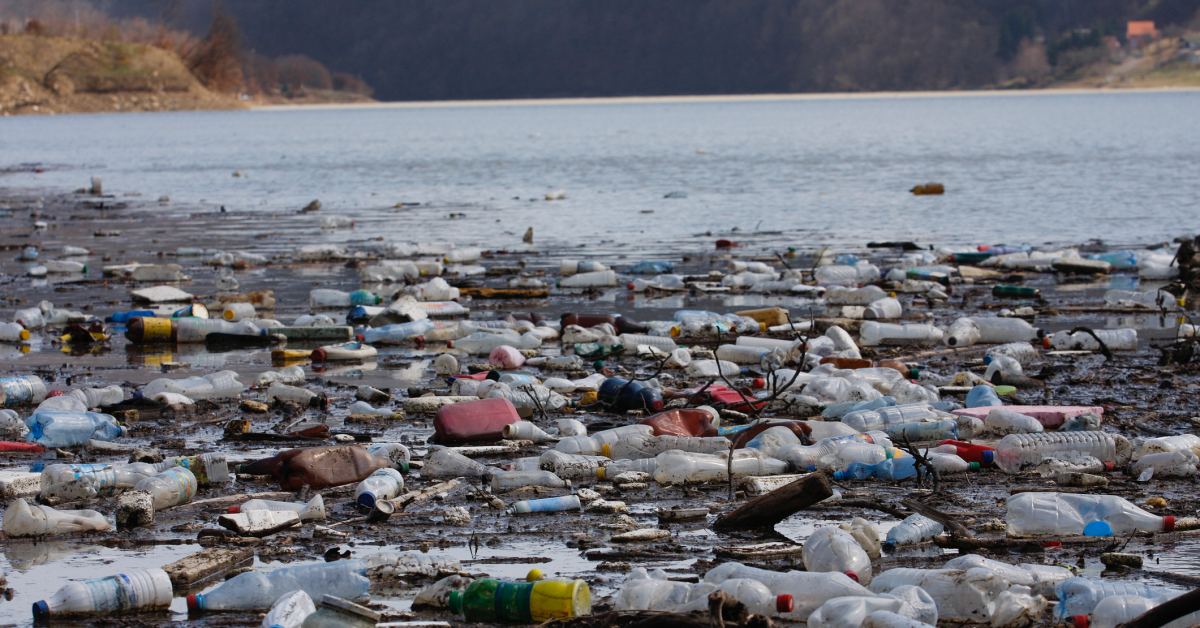
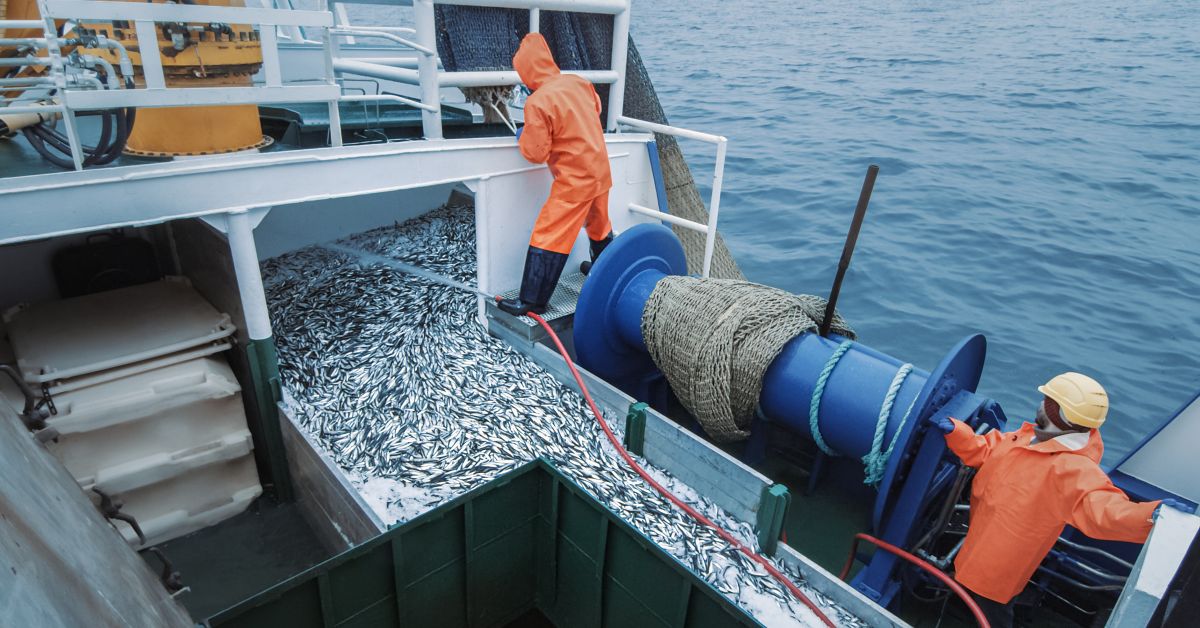 Emptying the Seas: A Global Trend of Over-Exploitation
Emptying the Seas: A Global Trend of Over-Exploitation Beyond the Obvious: Pervasive Environmental Influences
Beyond the Obvious: Pervasive Environmental Influences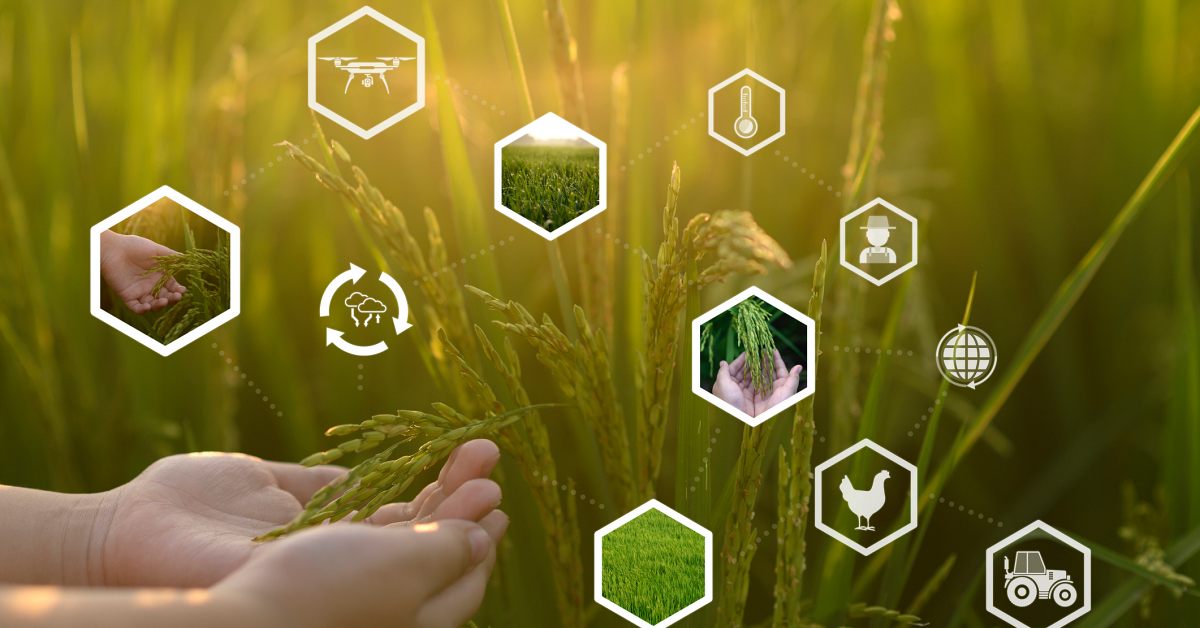 Embracing Holistic Approaches for Global Challenges
Embracing Holistic Approaches for Global Challenges


